Elise Siegel
In Elise Siegel’s studio there is an atmosphere of not quite the present, perhaps even not quite this place, i.e. the studio in which one is standing. There is a quality of elsewhere with regard to both time and place, perhaps it is best described as a sense of yonder. When we visited Siegel had been spending the preceding days purposefully grouping her ceramic sculptures, arranging them in rehearsal for what was then an upcoming show “Rough Edges” at Studio10 in Brooklyn New York. These works, ten or a dozen ceramic portrait busts, placed on podia, more or less encircled or enveloped the space. The impression is of a group, a crowd even, but there is less a sense of entering wagons circled, and more like we were walking into a paused séance. One piece, Portrait Bust with Amber Shirt and Lavender Hair (2016), is poised with cricked neck, listening, one could imagine, for the voice from beyond. Having said that one could be tricked into thinking that that was the yonder sensed above, ‘the other side’ as yonder. Yet I think it is the case, here, that yonder is best thought of as a different kind of ‘other side’. Yonder is interior space, human psychic interiority.
A trap for artists who use photography, or casting –working with an indexical sign–is that the work might be taken for straightforward reference: this is an image of such and such, this is the death mask of her or him, and so on and so on. In such a scenario it is as if one is just reporting the facts. The work done to get you there becomes –this is the conceit of the index– invisible. However, that is not the case here. Because Siegel shapes her clay sculpture by hand, because she does not cast it, and because she layers on layer upon layer of glaze –sometimes subtle, sometimes not so, sometimes naturalistic, sometimes mildly profane–what could, or even should, be a straightforward reference is here shot through with tremulous affect, trembling emotion. The ‘work’ done is very, very visible; indeed it is subtly confrontational.
In earlier work, when making full body sculptures, the pieces became Frankensteinian by necessity. Siegel had to fire the ceramic body parts in the kiln piece by piece, leg by leg, arm by arm and so on. Once fired and reassembled one bonus was a certain articulation of body movement and gesture, there was a sort of reinvention of contrapposto. The other bonus was the monster in the room. Seams were visible between body parts. The tilted head revealed the crack or gap, the cut that is yet to be sutured. A morcellized body stared the viewer down, while also displaying a sense of what had happened in the studio process to lead us to this state of affairs. A sense of history and bodily ruin pervaded.
So absent casting of actual bodies, a question might be how does one approach representing human form in sculpture, exactly what work does one do? In Siegel’s studio there are heads, upper torsos, facial expressions, mouths, eyes, colors, glances and looks. These have all been worked and shaped in layers of clay and glaze very much by the artist’s hand. In part it is that sense of assembly, of Frankensteinian piecing together that holds ones attention here even though with this current body of work it was not born of necessity. For the work currently in the studio there are no bodies, even though to some extent the podia of various heights upon which each piece rests do stand in for bodies. Siegel’s business here is heads, busts, not whole bodies. In, Portrait Bust with Dark Gray Bodice (2018) cranial sections are secured in what feels like a deliberately crotchety and ungainly manner. In the earlier, Portrait Bust with Lavender Hair and Black Base (2015), the face is slotted into the head as if it were a hockey goalie’s mask. Nothing is really synthesized. Everything is sort of added up, agglomerated. Disheveled fragments locate a provisionally assembled subject within what is typically taken as the focal point of the human sensorium.
In negotiating several registers of emotional economy how does an artist distribute, circulate or represent affect in static sculpture? How is it that this emotional sinew dynamically trades across the space of exhibition and how might we imagine the artist in the studio in relation to these emotive sculptures as she is shaping them? Having already recognized one armature of affect, the contrapposto, one might usefully bring to mind Bruce Nauman’s Walk With Contrapposto (1968) where the artist animates the emotive force of sculpture by, well, animating it. In his sluttish video parade, a play on contrapposto’s revolutionary torque of the body, he travesties both innovation and tradition for the expressiveness of sculpture. But after a hip-grinding hour he does come home with an important point –one that contrapposto itself taught us– which is that affect, interiority, is worn on the body. Which is to say that in its way (we all already know this) human interiority is not precisely interior.
For Siegel these turns of the head, the glazed facial expressions, the eyes cut away as holes, the splotchy smear of colored glaze for the lips, the drizzly tears of color down the chest are a vocabulary to evoke the injuries of the world as worn by the body; it is the argot she has evolved to articulate the pathos, horror and eros of daily human experience through figurative sculpture. To be with this work is like sensing the sadness of the snowman who knows about melting. These could be sculptures that have moved on from knowing about bodily articulation to knowing about desire and death. They are drenched in bodily-worn affect; it stains them.
In totaling up all these facial expressions and gestures there is a powerful sense, precisely because the sculpture is inanimate, that the pieces are frozen in mid-action. Of course freezing the gesture halfway through amplifies and paradoxically animates it. And then, atop the freeze, sophisticated colors –the glazes– pop at you from one bust to another like a pinball ricochet, or as an abrupt movement that is suddenly, tire-screechingly, parked. A sharp blue high-lighting facial feature glowers; affective shocks travel these pinball vectors. Taking in the whole group one is pinned down by a bodily borne emotional scattershot coming at you as you walk around the studio. As early as 1905 Freud observed that the analysand’s secret’s seep out of them without their knowledge, as Freud had it, if the analysand’s “lips are silent, he chatters with his finger tips; betrayal oozes out of him at every pore,” enigmatic body gestures, facial habits and ticks will give the game away. Thus as much as contrapposto can be said to be about articulating affect there is a very particular quality, a turn of the sculptor’s and the sculptures’ hand, to Siegel’s work that plays upon a back and forth between revealing and camouflaging affect –now you don’t see it, now it cannot be hidden.
It is important here to say something about the sculptures as a group. Siegel has noted that in earlier installations, where the aforementioned groups of figures were arranged in this semi-circular manner, viewers were loath to enter the group. Similarly in the current work, no figure exists in isolation, the whole ensemble steps (perhaps stumbles and lurches are also useful words here) forward as a parable of relatedness. In part this is a quality of the physical presence of sculpture, as in we share space with them. Glances boomerang back and forth across the room and this orients the experience of the work differently from, say, a group of paintings. In the studio, and presumably in the gallery we are at an antipode to solitariness. Yet we are far from being at ease with our company. We are frozen, cloistered, at some T. S. Eliot-like still point in time. So in the group, the assembly we now face, there is an articulation of looks from sculpture to sculpture and you, as the viewer, get folded into this group and its idiom of glances. And yes of course one experiences affect in isolation, assuredly so. But such charge of emotion is also the glue of relational transactions. Others ebb into the weft of our feelings, they flow through the warp; this is the architecture of affect in social beings. This group of Siegel’s implicates us all in the exchange of looks and bodily worn affect. They collectively demonstrate that the self-betrayal Freud surveyed, or more generously self-realization, does ooze out of us at every pore.
Siegel’s figures engage the viewer, I would argue, more so than a painting might (Even though when asked about other artists she ‘thinks about’, Siegel is quick to name painters not sculptors) and this is so because of a spatial-relational dynamic that they enforce. This latter is particular to sculptural representations of the human body. It happens whether its mannequins in Macy’s or sculpture in The Metropolitan. And this is not the same as the, eyes-in-the-painting-following-you-around-the-room thing. Because of the three dimensional presence of a bust that is approximately to the scale of a human form there is something of an excited engaging of the viewer within kinesthetic or proprioceptive experience. It is an affective, maybe even aggressive, engagement predicated upon something close to bodily sensation, maybe it is like echolocation for bats. To put it another way, one empathizes and engages with Siegel’s sculpture through 360 degrees. From whence one slips into tricky ethical territory; when does recognition or empathy imbue the relationship with a moral responsibility toward one another?
Thus it is that this group of sculpture’s facial treatments, by which I mean both sculptural treatments and glazes, trick out affect and memory and their collective movement through time. Emotions are wrought, and then paused. This is sculpture that offers an emotional hand. The offered hand is held, so to speak, yet it is truncated, abbreviated, by the death-like quality of stasis. Feelings are paused, as is the viewer, in a transitional emotional space and time, a still point. Perhaps it is important to remember that, for Eliot, the still point is “where past and future are gathered”.
More of Siegel’s work can be found at: https://elisesiegel.com/es/
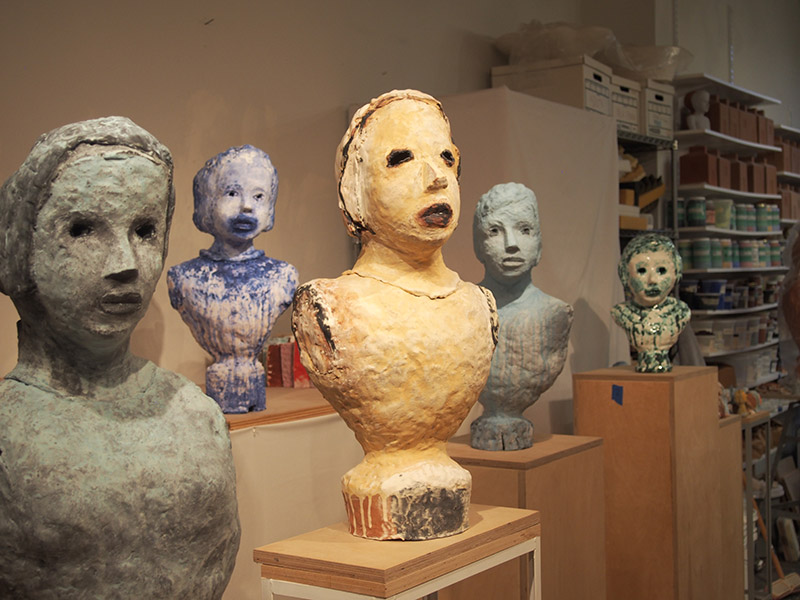
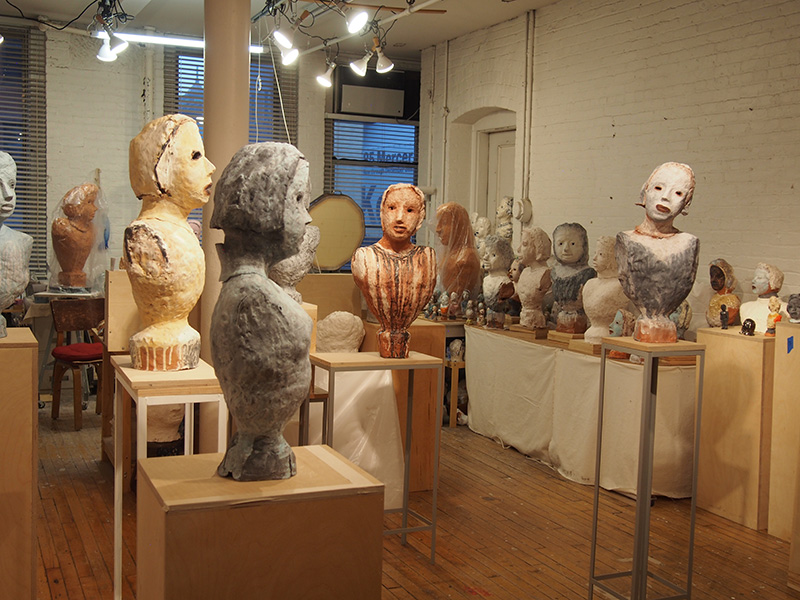
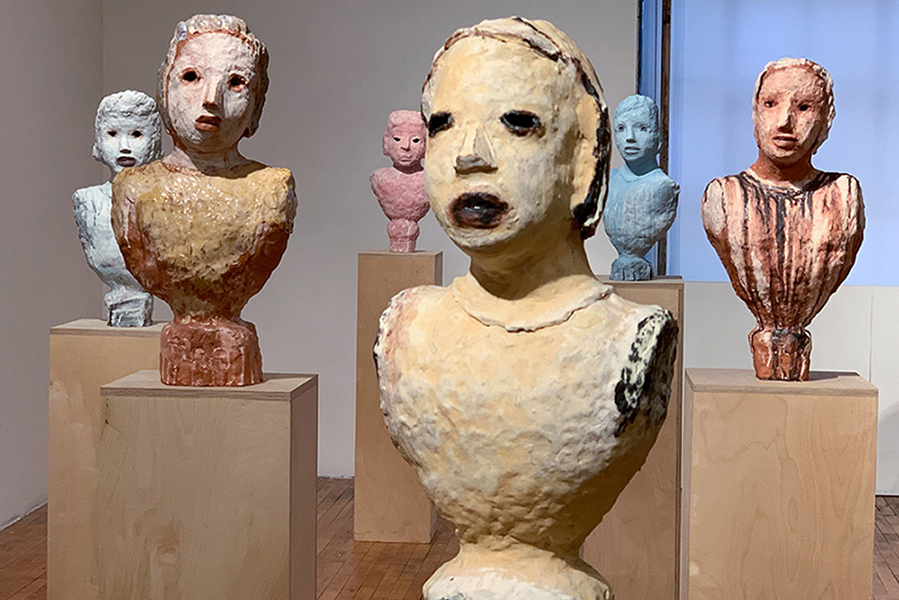
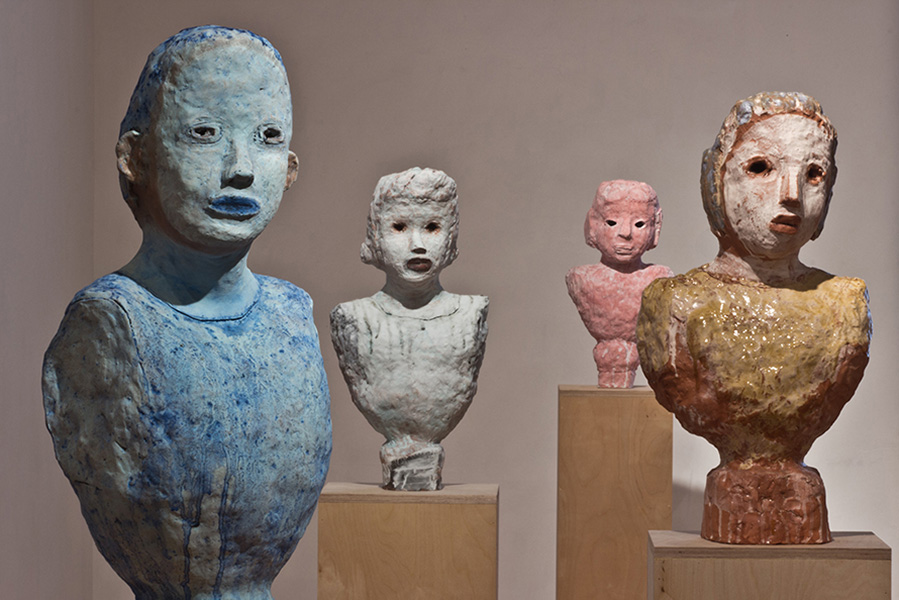
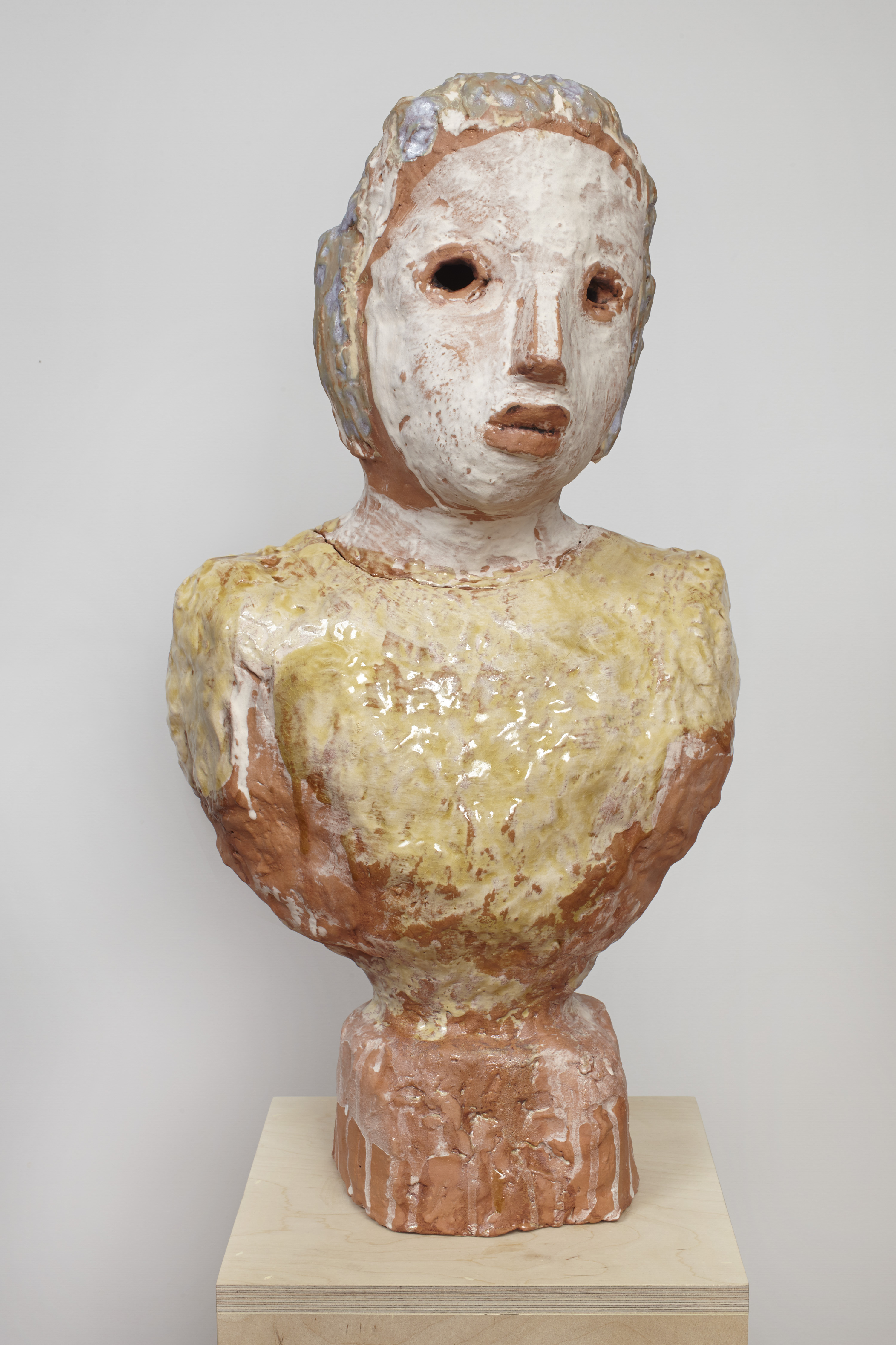
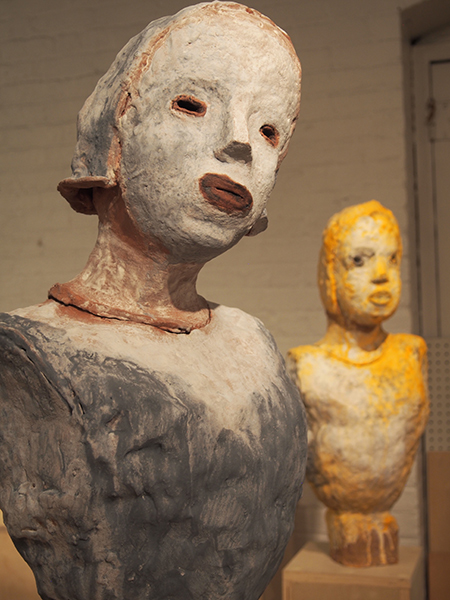
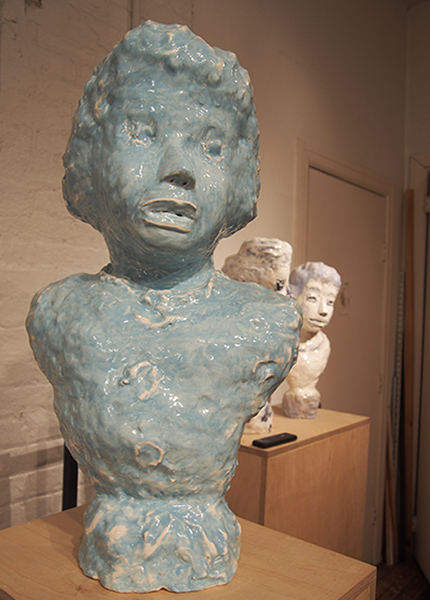
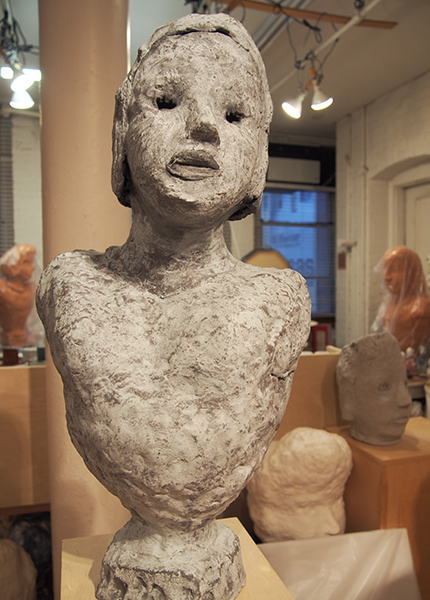
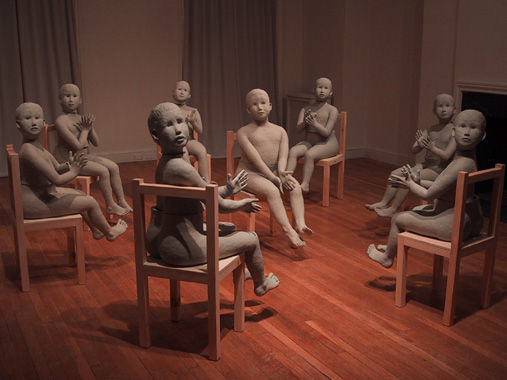
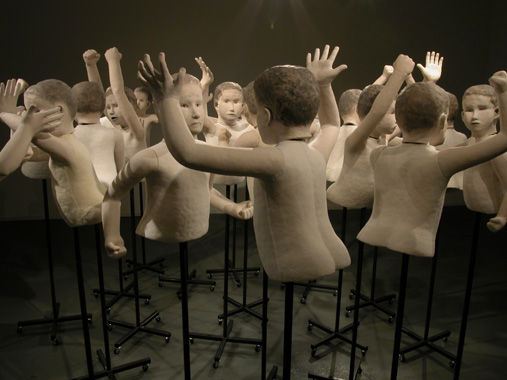
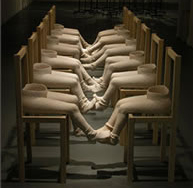
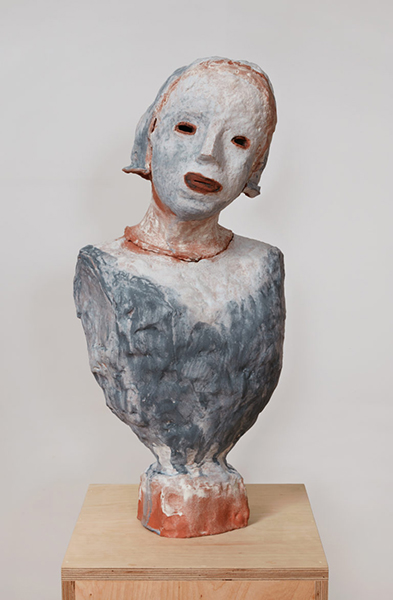
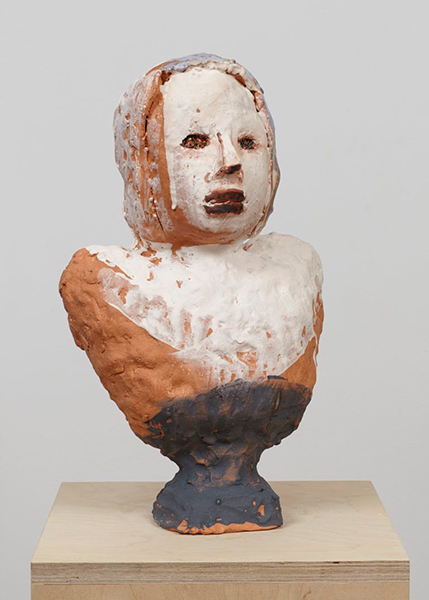
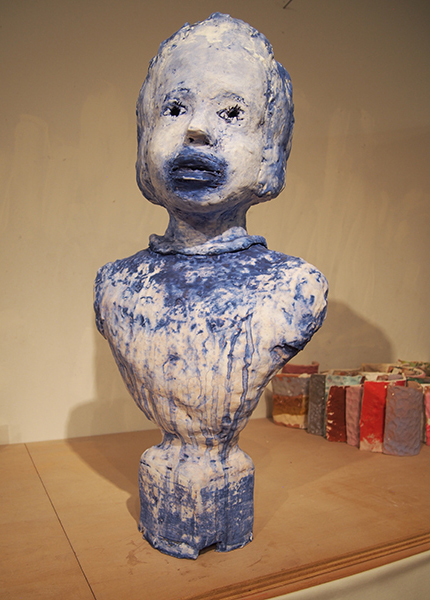
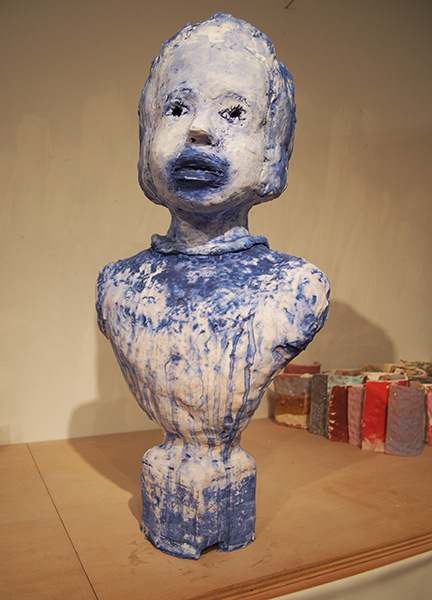
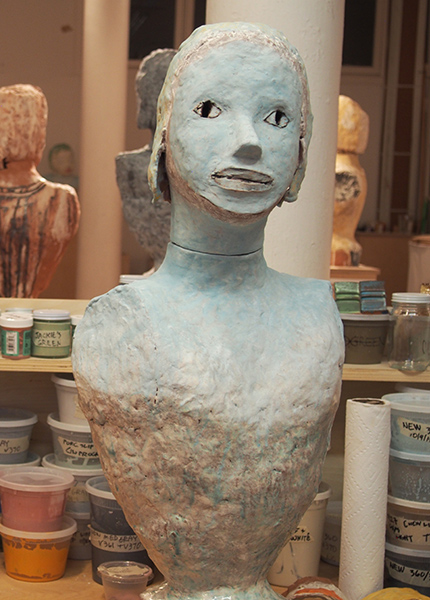
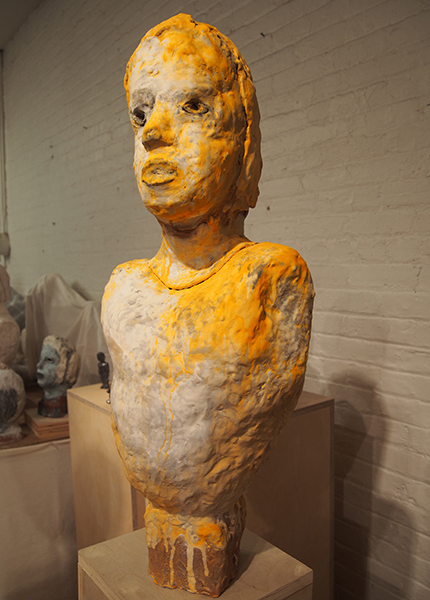
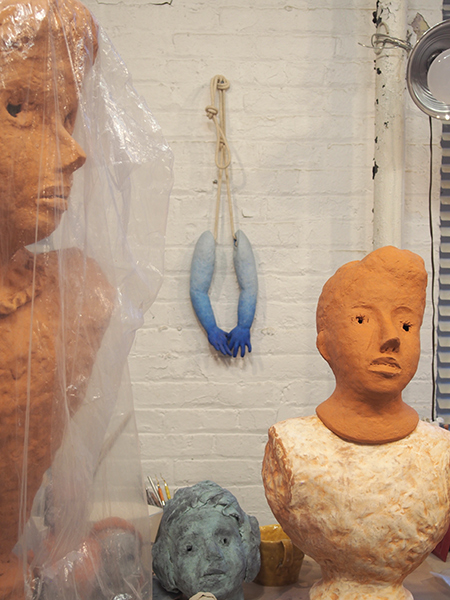
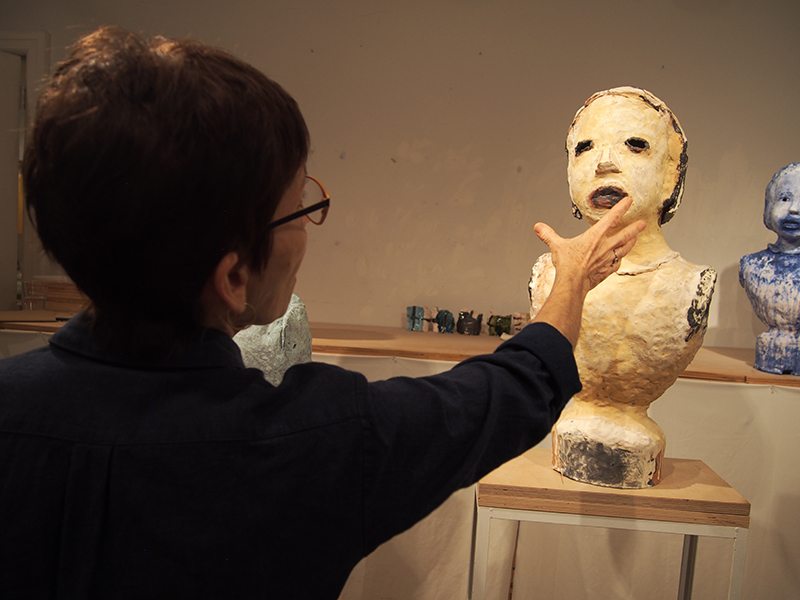
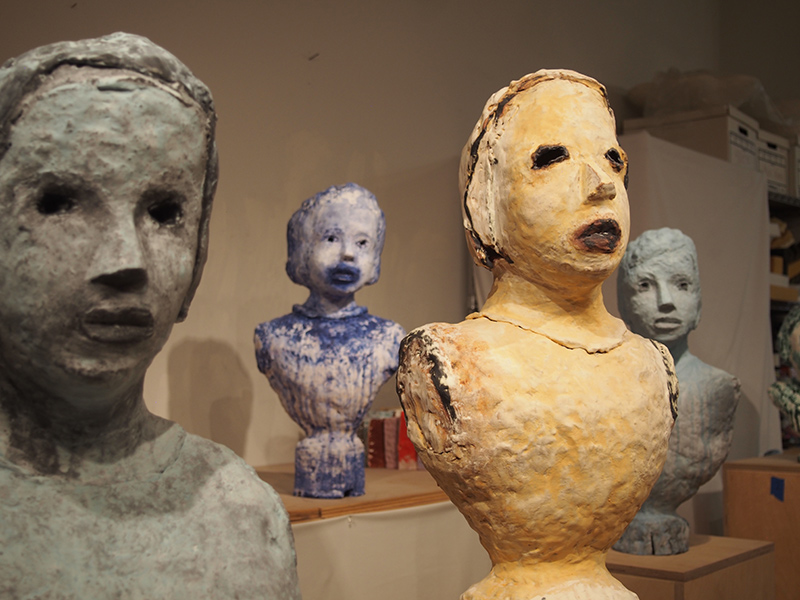
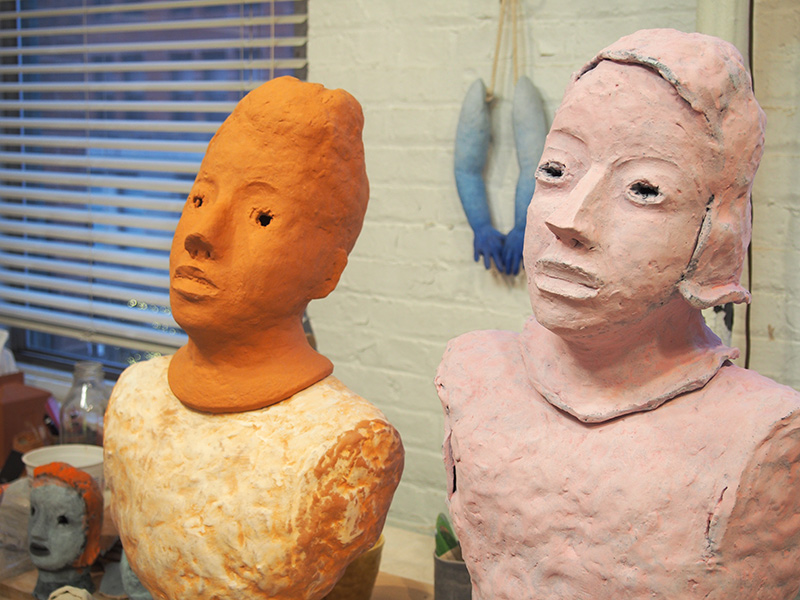
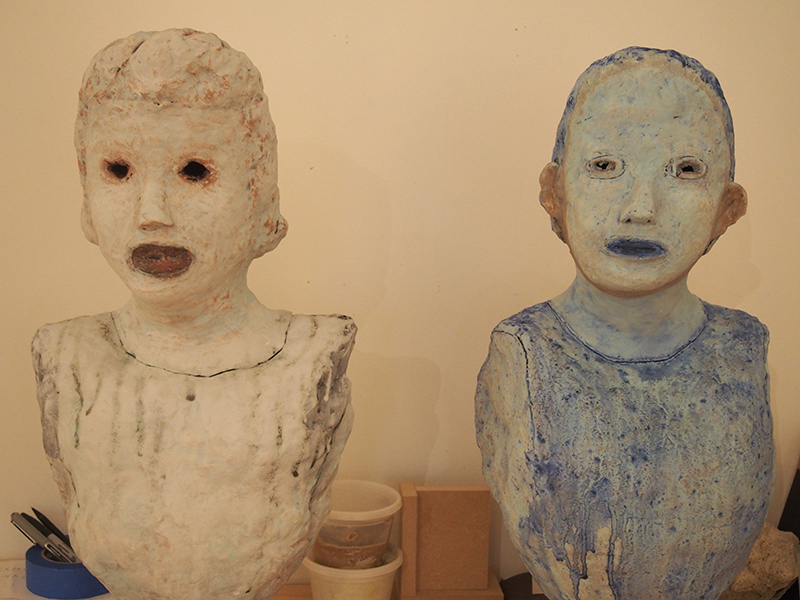
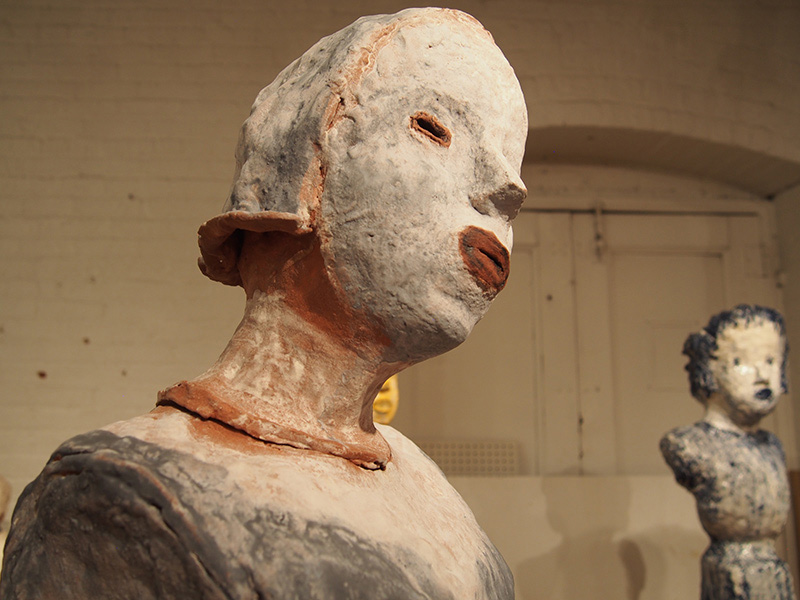
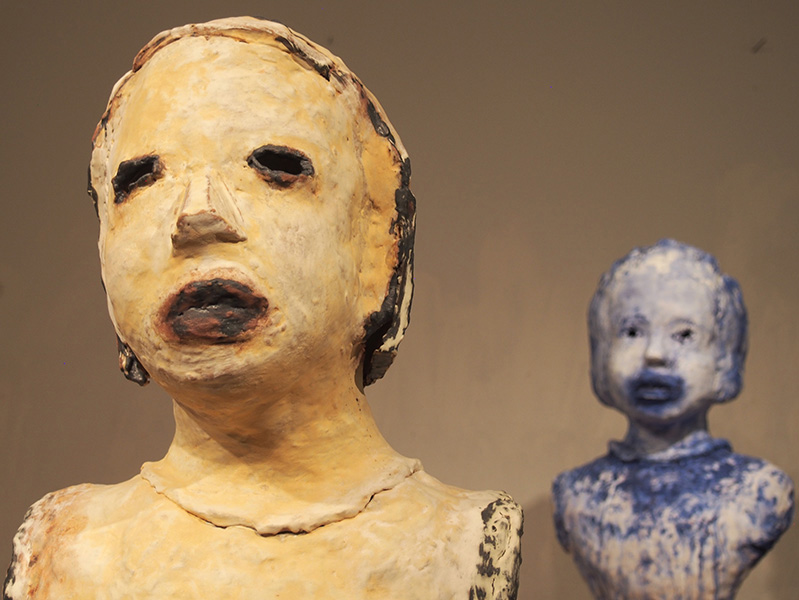
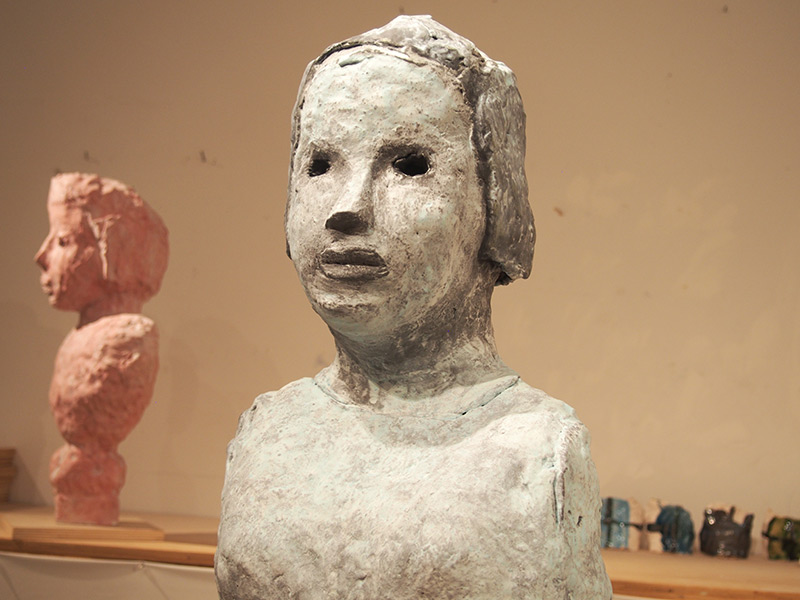
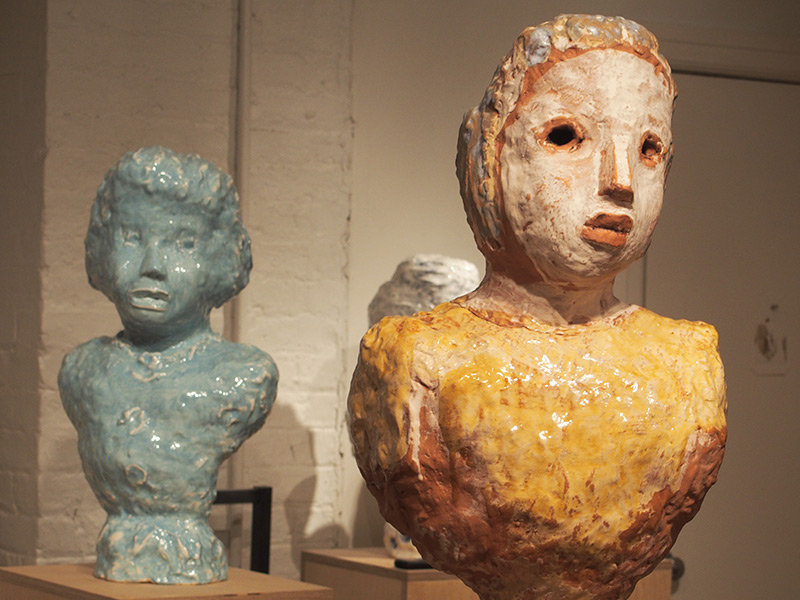
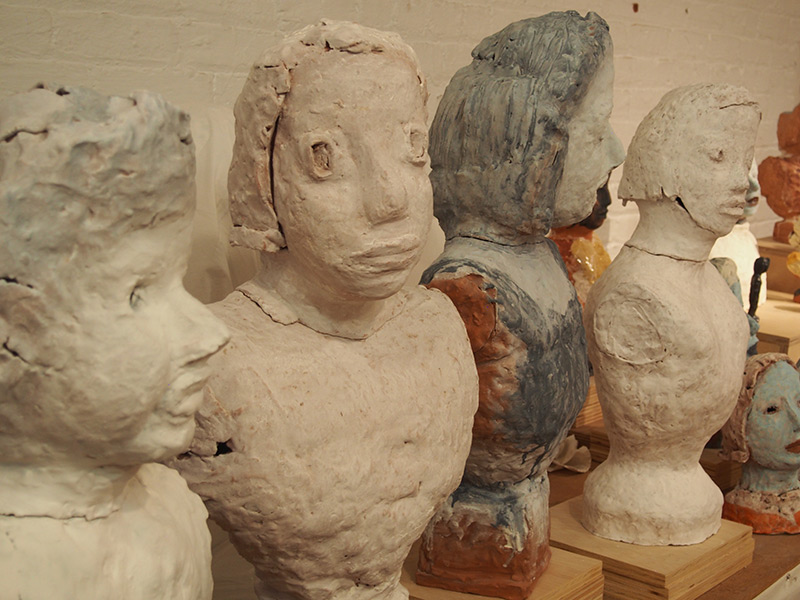
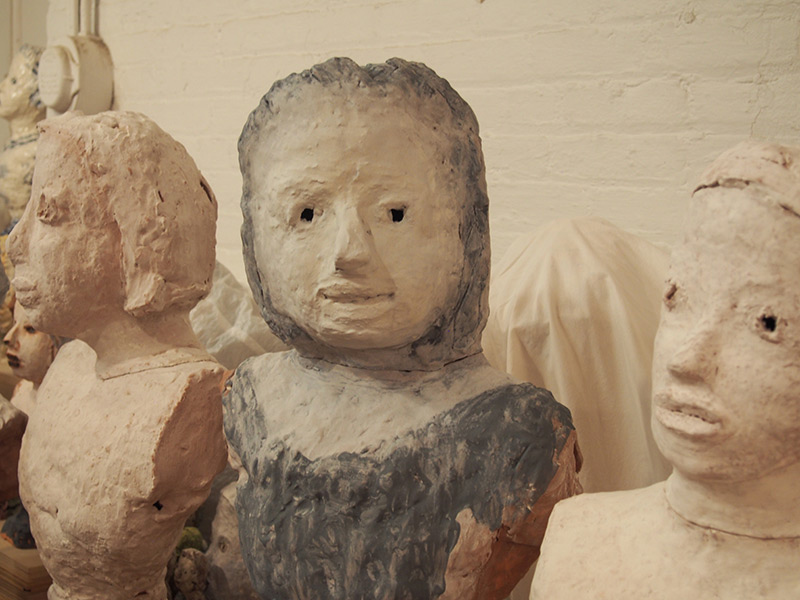
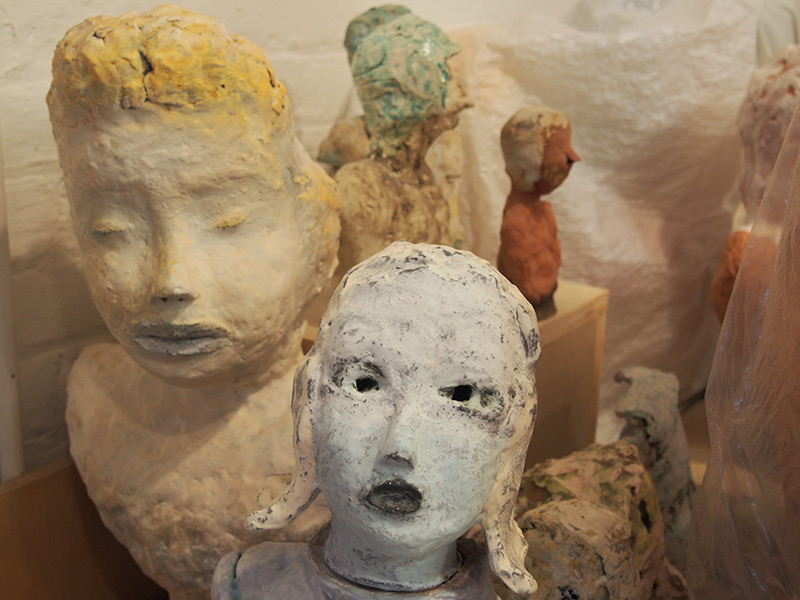
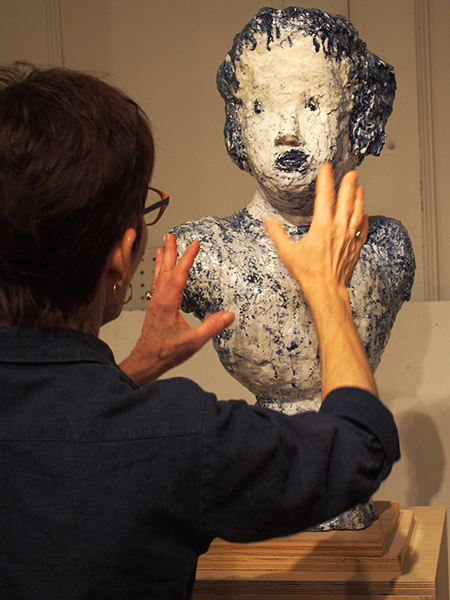
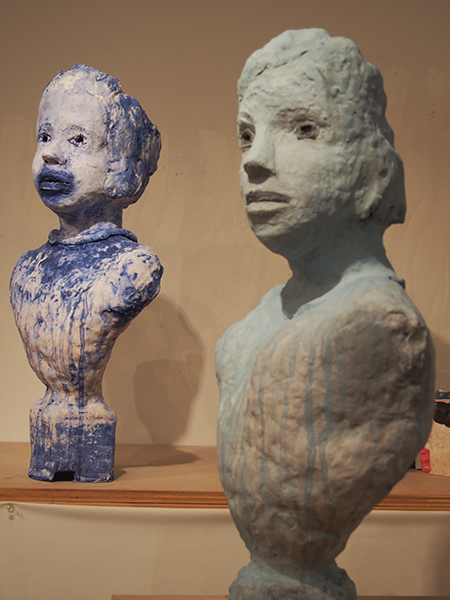






without words other than breathless fan